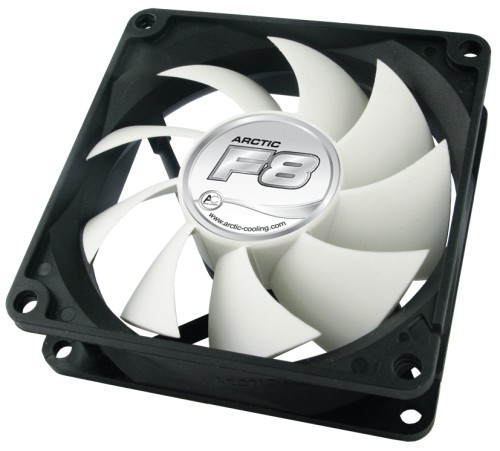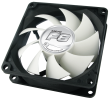Arctic F8 3-pin 80mm Case Fan Discontinued | |
| More variations available Show | |
Arctic Cooling Arctic F8 3-pin 80mm Case Fan
The ARCTIC F12 offers a nine-blade fan design, giving 20% higher airflow compared with a generic seven-blade case fan, as well as virtually inaudible operation thanks to the high quality fluid dynamic bearing and new impeller design.
Impressive airflow improvement
The ARCTIC F8 integrates some delicate features to improve the overall airflow and noise control management. Most 80mm standard fans are equipped with seven blades only, but these come with nine blades in order to create higher airflow efficiently.
Moreover, the refined ninja-knife impeller design not only improves the laminar airflow, but it also lowers the noise level. Tested by hundreds of simulations, the results are significant, airflow is over 20% higher compared with a generic 7-blade case fan.
Higher airflow / higher noise level
Over the years, ARCTIC COOLING has built a reputable name on precise case fan engineering and noise control, and the new ARCTIC F8 is no exception. Despite the increase in airflow, the fans remain nearly inaudible thanks to the high-quality fluid dynamic bearing and the new impeller design. The maximum noise level is at only 0.4 sone. The ARCTIC F series is definitely a good option for anyone pursuing a quiet PC case cooling solution.
Features
- Extremely quiet
- High airflow and static pressure
- Low noise impeller
- Fluid dynamic bearing extends service life
- 28 CFM / 0.3 Sone / 2000 RPM
| Specifications | Arctic F8 |
|---|---|
| Dimensions | 80 L x 80 W x 25 H mm |
| Rated Fan Speed | 2000RPM |
| Air Flow | 28 CFM / 47.6 m3/h |
| Noise Level | 0.3 Sone (approx. 20 dBA) |
| Weight | 70 g |
| Warranty | 72 months |
| EAN barcode | 0872767002609 |
| Specifications | Arctic F8 |
|---|---|
| Dimensions | 80 L x 80 W x 25 H mm |
| Rated Fan Speed | 2000RPM |
| Air Flow | 28 CFM / 47.6 m3/h |
| Noise Level | 0.3 Sone (approx. 20 dBA) |
| Weight | 70 g |
| Warranty | 72 months |
| EAN barcode | 0872767002609 |
Customer Reviews
Near silent
I tested this with only my server switched on (which is a near silent machine) at the other end of the room - I still had to put my ear next to it to get an idea of how much noise it makes.
I’m less sure about the flow rate (it’s not bad, but I tend to overtax my computer), however with the price and the low volume I could cope with using a few of these together. Very good value for money.
I changed back to my old Xilence fans
I just upgraded my GPU cooler as it was over heating, and thought I’d also upgrade my case fans at the same time to help it out - and I rather wish I hadn’t.
These definitely shift a LOT more air than my old Xilence Red Wing fans, but the downside is that they are CONSIDERABLY noisier too.
The manufacturers claim that the Xilence move 19.6CFM, and these move 28CFM, but my, (very unscientific) method of feeling the air shifted with my hand behind the fan suggests that the Arctic easily moves at least double the air of the Xilence.
However, the stated noise of 15db for the Xilence compared to 20db for these doesn’t ‘feel’ right either. Just one Arctic F8 is FAR louder than all three of my Xilence Red Wings combined.
I had these in my case for about 15 minutes before swapping the Xilence ones back in.
If you really need good airflow then these are still better than the cheap generic junk that comes with most cases, but, if you’re used to very quiet - then these aren’t very
Product Resources
FAQ
How do I measure fan size?
The size of fan you need will generally be determined by the size of the fan fitting position in your PC case. The sizes of all the fans on our website are shown as measured along any one of the fan’s four sides, NOT the distance between the fan’s screw holes! Our most popular fan size is 120mm, followed by 80mm. This isn’t really dictated by customer preference, but more by recent designs of PC cases.
As for the thickness (depth) of the fan, generally 25mm (1 inch) is by far the most common depth, although smaller fans can have shallower depths such as 15mm or even 10mm. All our fans are 25mm thick unless otherwise stated. If you have any questions about which fan you should order, please don’t hesitate to get in touch.
If you know the distance between the fan mounting screw holes but don’t know what fan size to order, please see the following table. Note that the mounting hole measurements shown below are taken horizontally or vertically between the holes and not diagonally.
Screw hole spacings and fan sizes
Space Between Screw Holes Fan Size 32mm 40mm 40mm 50mm 50mm 60mm 60mm 70mm 72mm 80mm 83mm 92mm 105mm 120mm I received a small cable (resistor) with my fan; what is it for?
The resistor cable (also called Ultra Low Noise or ULN cable) is designed to allow the fan to run slightly slower for even quieter operation. The benefit in lower running noise is significant. Although the airflow will be reduced slightly, this usually has minimal effect on PC temperature. We would generally recommend using the ULN resistor cable for best results in almost all circumstances.
How can I tell which way the air blows through the fan?
Hold the fan so that the round fan sticker is facing you. You are looking at the rear of the fan. When you plug the fan in, the air will be blowing towards you. If you want a fan to act as an air intake, then the fan sticker will be facing the inside of the case. Some fans also have two small arrows moulded into their plastic housing - one arrow shows the direction of airflow, and the other (at 90°) shows the direction of blade rotation.
Is it possible to use a 4-pin PWM fan or CPU cooler with a motherboard which has only 3-pin fan headers on it?
Electrically, there is no problem doing this - the fourth pin on the fan cable is used purely for PWM control and is not needed in order for the fan to run. So you can plug the 4-pin fan connector onto the 3-pin motherboard fan header, leaving the fourth pin not connected to anything. The fan will potentially run at full speed, so if you would like to reduce the speed of the fan you will need to adjust the fan speed setting in your BIOS or use fan control software such as SpeedFan in Windows.
The only other problem to consider is that occasionally, components immediately adjacent to the motherboard fan header can get in the way of the larger 4-pin fan connector, physically preventing connection. This problem also occurs if you try to use an in-line fan speed controller such as the one made by Gelid.
Another avenue to explore is the possibility of using a bay-mounted fan controller. Several models are available now which provide 4-pin fan headers, so this is an easy way to use 4-pin PWM fans in a PC system which has only 3-pin fan headers on its motherboards. When using this method, you may find it necessary to disable any fan warning settings in your motherboard BIOS, since the motherboard may incorrectly believe that its CPU fan has failed when the fan is connected to a fan controller rather than directly to the motherboard itself.
Top Quiet Fans
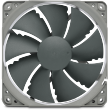
Noctua NF-P12 REDUX PWM 12V 1700RPM 120mm Quiet Case Fan

Noctua NF-F12 iPPC PWM 12V 3000RPM 120mm High Performance Fan

Noctua NF-A12x25 PWM chromax.black.swap 12V 2000RPM 120mm Fan
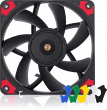
Noctua NF-A12x15 PWM chromax.black.swap 12V 1850RPM 120x15mm Fan

Noctua NF-R8 REDUX 12V 1800RPM 80mm Quiet Case Fan

Noctua NF-A12x25 PWM 12V 2000RPM 120mm Ultimate Quality Quiet Fan
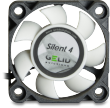
Gelid Silent 4, 40mm Quiet Case Fan

Noctua NF-R8 REDUX PWM 12V 1800RPM 80mm Quiet Case Fan

Noctua NF-F12 iPPC PWM 12V 2000RPM 120mm High Performance Fan

Noctua NF-A8 PWM 12V 2200RPM 80mm Premium Quality Fan

